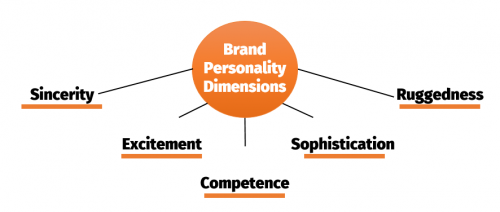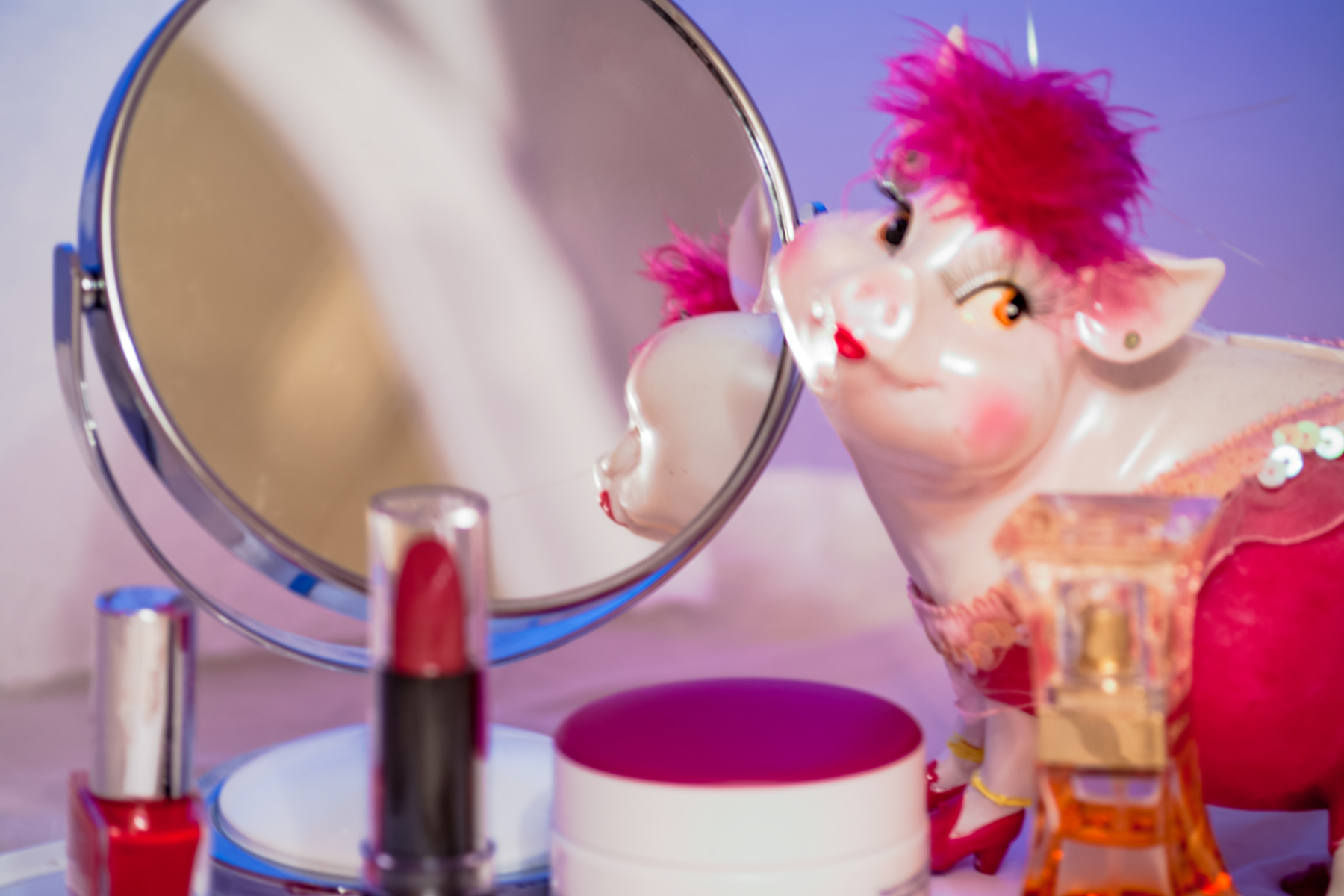The internet is crowded. And that’s an understatement. News sites are sending your laptop fans into overdrive because they are packed heavy with ads. Promoted posts are worming their way into your social feeds like… well, worms. It’s even a challenge to get through a YouTube video without being blasted by a sponsorship message of some kind. (Needless to say, this blog isn’t sponsored by Squarespace.)
But let’s be clear – we understand the need for ad revenue, affiliates and partnerships, particularly when it funds many of the free content or apps that we use during the average day. We also understand that the internet is just as much a marketplace as it is a place for recreation and research. Even so, there are so many brand messages thrust upon us that it can be a little overwhelming.
Let’s get some stats in here before someone pipes up with “It’s not that bad, is it?” In 1970, the average American was exposed to up to 1,600 ads per day. In 2021, it was estimated that the average American saw up to 10,000 ads in one day – and that’s double 2007’s estimate of 5,000.
How to get noticed in brand advertising
In the world of ridiculous budgets, Superbowl ad breaks and celebrity endorsements, the answer is money, plain and simple. For a big brand to get bigger, they increase their marketing spend and what do you know, we’re all talking about it on Slack or around the watercooler the next day.
But we don’t work with Aldi, Marmite or John Lewis. We work with SMEs, legal firms and medical organisations. Whilst these businesses are successful in their own field, they’re not spending millions of pounds on an extended Christmas commercial or a limited run of novelty packaging. And we like to think that even if they did have the budget, they wouldn’t do it anyway.
Honesty is the best policy
You may have seen or heard us talk about #honestbrands. It’s our unofficial tagline and something we’ve stood by since the day Jeremy and James set up shop. We work with brands who have something authentic and genuine to say, and want to say it in a way that is principled and sincere. We do this because we believe that authenticity is what customers are really looking for. And we do this because in a crowded marketplace, you can be heard, noticed and remembered by being your true self.
Breaking it down
We used some nice words there (authenticity, genuinity, principality, sincerity), so let’s use them to set out how and why an #honestbrand is key to cutting through the noise, attracting prospects, and converting them to loyal customers..
Authenticity
The bedrock of it all. And for us, it starts with respect. Every brand or business that we work with has an inordinate amount of respect for their clients and customers. To show respect to your customers you must understand their personas, their expectations and their needs.
Tone of voice, accessibility and usability all play a key part in putting out a clear marketing message. Awareness, responsiveness and nimbleness play a crucial part in understanding your audience and acting proactively when something needs to change.
Examples of brand authenticity:
- Being consistent with your story and your service
- Delivering real value to your clients
- Treating employees and customers with respect
- Being transparent around issues and problems
Genuinity
Genuinity is avoiding dishonesty at all costs. That might be something like paying for fake reviews, manufacturing an origin story as part of your brand, selling false promises, or even some of the more nitty gritty, such as passing customer data to third parties.
We help our clients show their genuinity by helping them discover their story. We often hear something along the lines of “But why would our customers care?” The truth is, customers are looking to buy from a brand they feel they can trust, and that all begins with the very human practice of simply telling them who you are and where you’re from.
Examples of brand genuinity:
- Avoiding unethical marketing and SEO practices
- Avoiding misleading user experience design
- Telling your audience exactly who you are
- Living up to the promises you make in your marketing
Principality
It sounds quite authoritarian, doesn’t it? Principles are fundamentally a code of conduct, which in brand and marketing world, equates to values. We’ve spoken extensively about brand values in several recent blogs, which you can check out via the following links:
The golden rules of branding
If you don’t understand your brand, how can you position it?
Why simplicity is key when considering how your brand reflects your business
Examples of brand principality:
- Setting clear and attainable brand values
- Apply them to how you work with and hire your staff
- Apply them to how you treat your customers and clients
- Apply them to your socioeconomic responsibilities as a business
Sincerity
In 1997, David Aaker, a well-recognised theorist, published the 5 Dimension Brand Personality Model. It emphasises the importance of identity and offers unique solutions to building a strong brand. Today, the paper’s concepts are still widely used by many leading brand agencies and strategists. In Aaker’s model, sincerity is a key part of brand personality.
Sincere traits include being down-to-earth, honest, wholesome and cheerful. This differs from honesty in that it’s the way things are communicated rather than what is communicated. For instance, a business saying “We are a B Corp so we are better than other companies”… that’s not sincerity. Don’t be like that.
Examples of brand sincerity:
- Acting humbly around your merits such as awards and accreditations
- Showing interest, support and compassion to your clients and customers
- Remaining true to your beginnings or your ‘roots’ as the business grows
- And most of all, sticking to your authenticity, genuinity and principality

Be an #honestbrand in 2022 and beyond
These four pillars form the foundation of an #honestbrand. To build upon those foundations, businesses need people. Those people are everyone: the founders, the marketing team, the HR team, the sales team, the call centre team, the front of house team.
Whilst every business is different, the pattern remains the same. Good leadership, strong values and a clear vision pave the way for a business that can expect low staff turnover and loyal customers.
If you’re looking to put words into action, or you’re ready to start walking the talk and the walk, consider working with a brand agency like Journey. We begin our client relationships with a discovery period in which we can really understand a business, its people and their customers. From there, we can make informed and validated decisions around design, brand, marketing, content and much more.
It’s all about the Journey.
back to all news or you may also be interested in the news below:
TWEET OR TWO
To ensure you stay in the loop and receive our news, updates and general musings hot off the press, follow us on Twitter now. We promise not to bombard you!
Keep it simple, stupid. A phrase for all seasons, situations and scenarios. It’s never nice to be on the receiving end of it, so please take this intro in jest.
Simplicity should be a brand’s best friend. Whether a fledgling startup or a big, bustling business, a simple brand will always triumph over an identity that is confusing, convoluted and overly-complicated.
In this blog we’re not just going to be talking about brand design and identity, but culture and values too. Because a ‘brand’ is every part of your business, not just the logo on your letterhead or the particular shade of yellow on your business cards (“The tasteful thickness of it. Oh my God, it even has a watermark…”).
Let’s start with design
Between us, we’ve probably taken more logo briefs than Paul Rand and Saul Bass combined, and more often than once, we’ve found ourselves talking potential clients down from the lofty heights of barely readable cursive fonts and ill-conceived illustrations.
Take a look at some of the greatest (or at least most recognisable) logos of our time. Braun. Apple. BBC. Audi. They are cool, they are small, and most of all, they are simple. Of course, they have earned their place in the logo hall of fame, but even the earlier iterations of the Nike logo were a hot mess. Many of the better-known logos that we know today have been through a journey of simplification of their own, but that’s not to say brands need to come off the starting blocks with something overly-designed.

But don’t be fooled – this isn’t a cost-saving exercise. We certainly aren’t going to draw a quick ‘swoosh’ in Adobe Illustrator and hand it over for £300. But we also won’t be charging an exorbitant price for what seems like very little work. To us, it’s about research and balance. We will take the time to understand our clients, their values, their product and what they’re trying to achieve and with whom, and we’ll balance all of that in a logo (and wider brand) which works in a modern marketplace.
You may roll your eyes when designers push back on your ambitious identity design ideas, but remember, we’ve been here before, and this is what we do. Trust the process and you’ll be happier with the outcome, and more so, your audience will too.
Elementary, my dear Watson
Beyond the logo and arguably more important, are your brand elements. These could be anything from a bespoke set of icons, to pre-written taglines and headlines, or even your colour palette and font pairings. Once again, we don’t just throw the office dart at a Pantone chart and pick a shade. Colour science is important, as is perception and accessibility. Your brand is the coming together of beautiful design, imagery, colours and copywriting, which tell the user what they can expect from your organisation, as succinctly and as authentically as possible.
Sure, certain colours won’t work well with one another, and some are just meant to be. Some colours have connotations or associations, such as every IT company in the whole wide world using blue, or green being the agreed colour for sustainability and ecology. Accessibility should be a priority too. Colour contrast (and typography choices) can make or break the user experience of somebody with visual impairment. Keep it accessible.
Add too many brand elements to your toolkit, and your marketing teams will get confused and ultimately make mistakes. Add too few, and a rogue content designer may take it upon themselves to use unapproved illustrations or symbols, or worse-still, ClipArt. (Instant dismissal, surely.)
A brand toolkit should be expansive enough to convey meaning and messaging in a way that is simple and straightforward. Clear brand guidelines should help anyone from any area of the business to understand what can and cannot be used together. And with a gatekeeper or brand team to keep an eye on it all, consistency will remain present across all of your digital and physical channels.

Value the value of your values
A good brand will live and breathe its values in everything it does, from the internal company culture to the customer onboarding process. We absolutely love brands who get this right, and we love to help brands get this right too. Let your customers know what to expect when they deal with you, and don’t deviate from that promise.
A well thought out and thoroughly tested customer journey that is a true reflection of your business, is what will ultimately win you customers and/or sales. A poorly thought out or confusing customer journey, particularly one that doesn’t feel aligned with your overall brand, can push a customer away to the competition.
This is where a brand, a brand team and ultimately your brand agency too (hiya) should be doing the heavy lifting. If you’ve already put a great deal of time, thought and expense into how your brand looks, you’d be shooting yourself and all of your colleagues in both feet if you didn’t spend time considering how your brand feels.
Customers, employees and users are looking for honest brands more than ever before. Customer loyalty, despite it not being a 1950s high street, is still very much alive and well, and websites like Trustpilot and Glassdoor make it very easy to unearth the ‘nasties’ in many industries.
If you’ve spent time building a vibrant, diverse and positive workplace culture, it would be a tremendous shame to exclude that from your brand. Even so, we’ve been in several brand workshops where our clients say things like “But why would our customers care about who we are?” Well, for many it’s almost all they care about.
Demonstrate to the wider world how you’re a better organisation than ‘them next door’ and do it in a way that is simple and sincere. Remember, audiences have already forgotten that they have an attention span before they even hit your website or open your app, so it’s key that you get across what you’re trying to say concisely, not only in word count, but in visual design too.
It’s great that you want your brand’s personality to come across, but don’t overdo it. Too much copy, and you’ll lose your audience. Too much wordplay, and you may lack sincerity. Too few photographs, and you’ll lack the human touch.
Keep it simple, stupid
We are reiterating ourselves because it is just so important. Take a look at our portfolio of work and you’ll see a common theme. Clear, accessible design that lets brands and their personalities speak for themselves.
In a world where add-ons, upgrades and uploads are flooding our minds with realms of information, it pays to keep it simple.
You’re not stupid. Sorry we called you stupid.
If your brand needs simplifying or you’re having trouble saying what you mean, let’s talk. Fill in the form at the bottom of this page and we can set up a call or a meeting.
back to all news or you may also be interested in the news below:
TWEET OR TWO
To ensure you stay in the loop and receive our news, updates and general musings hot off the press, follow us on Twitter now. We promise not to bombard you!




